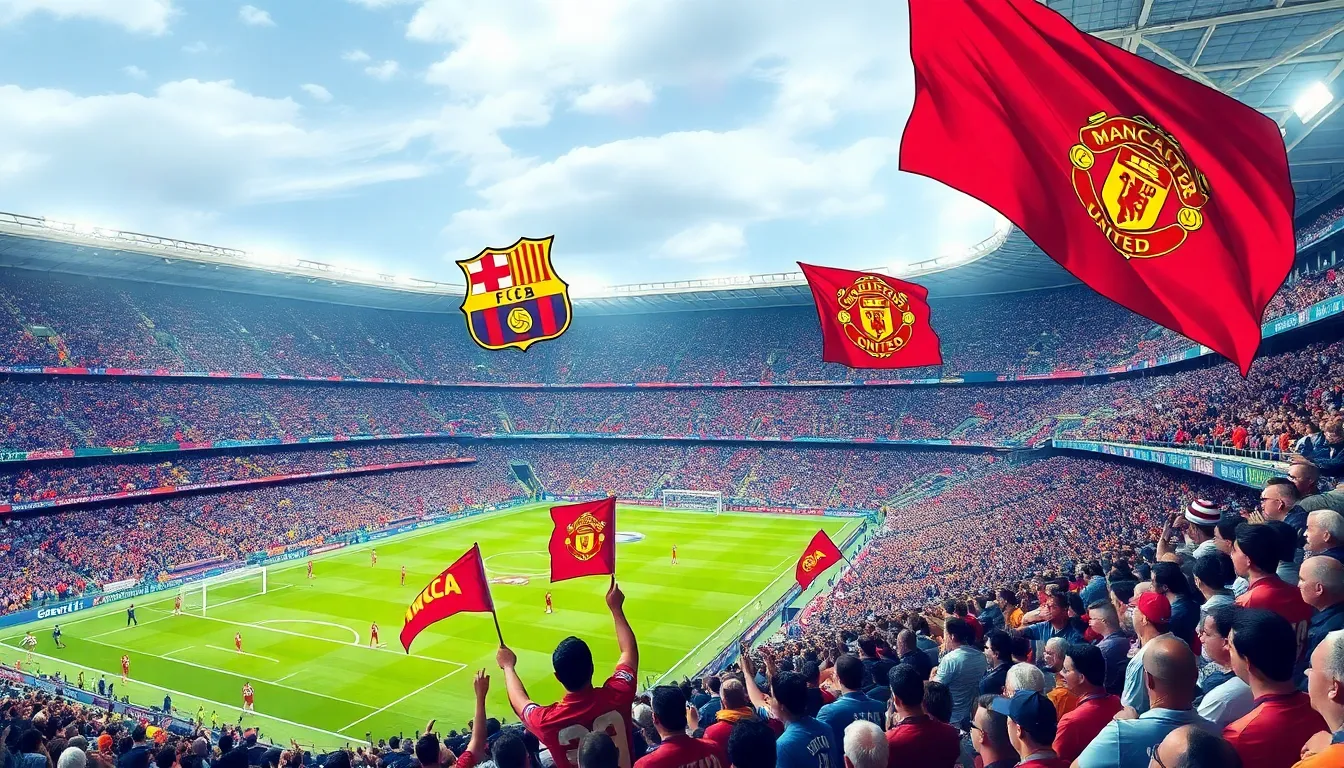Table of Contents
ToggleIn the world of soccer, the battle between FIFA and FC is as fierce as a last-minute penalty kick. While FIFA stands tall as the governing body of the beautiful game, FC represents the heart and soul of clubs worldwide. Fans passionately debate which holds more power: the organization that sets the rules or the clubs that bring the magic to life.
Overview of FIFA and FC
FIFA, the Fédération Internationale de Football Association, governs global soccer. It regulates competitions, sets rules, and oversees international events, such as the FIFA World Cup. Established in 1904, FIFA hosts tournaments enriching the sport’s profile and expanding its reach. FIFA’s responsibilities also include promoting fair play and ensuring player welfare.
FC symbolizes football clubs worldwide, representing local communities and passion for the game. Clubs like FC Barcelona and Manchester United cultivate fan loyalty through thrilling performances and rivalries. Clubs operate autonomously, creating unique identities and fostering local connections. The influence of FC extends beyond the pitch, impacting culture and society.
FIFA and FC have distinct roles but are interdependent. FIFA establishes the framework within which clubs operate, while clubs generate the excitement that captivates fans globally. Debates often arise regarding their respective impacts on the sport. Some argue FIFA’s regulatory authority ensures fair competition, while others believe clubs embody the spirit of football, driving the sport’s popularity.
The relationship between FIFA and FC illustrates the balance between governance and passion. While FIFA focuses on broad regulations and international standards, clubs offer grassroots engagement that resonates with fans. This dynamic creates a vibrant landscape for soccer, where both entities contribute significantly to its growth and development.
Historical Background

FIFA and football clubs represent distinct yet intertwined aspects of soccer’s history and development. The evolution of both entities has significantly influenced the sport’s global reach and organizational structure.
FIFA’s Foundation and Evolution
FIFA, or the Fédération Internationale de Football Association, formed in 1904 in Paris, France. Its original goal involved coordinating international competitions and establishing standardized rules. Throughout its history, FIFA expanded its scope, introducing the inaugural FIFA World Cup in 1930. Over the decades, FIFA adapted to changes in the sport, establishing various tournaments and initiatives focused on growth, governance, and player welfare. As of 2023, FIFA oversees 211 member associations, reflecting its role as the primary authority within the sport.
The Growth of Football Clubs (FCs)
Football clubs emerged in the late 19th century, originally organized by local communities. Clubs like FC Barcelona and Manchester United helped popularize the sport, creating dedicated fan bases and regional rivalries. The introduction of leagues and championships allowed clubs to compete at higher levels. By 2023, professional clubs hold substantial influence, generating significant revenues through sponsorships, merchandise, and broadcasting rights. This growth transformed clubs into key entities, driving interest and engagement with the sport worldwide.
Key Differences Between FIFA and FC
FIFA and FC differ significantly in their organizational roles and objectives within the world of soccer.
Organizational Structure
FIFA operates as a global governing body composed of 211 member associations, each representing a country. Its hierarchical structure includes a president, council members, and various committees responsible for different aspects of soccer governance. FC, on the other hand, encompasses individual football clubs, each managed independently. These clubs might have their own boards, coaches, and players, promoting diverse organizational frameworks that prioritize local interests over global governance.
Purpose and Function
FIFA’s primary purpose lies in regulating international soccer competitions and setting universal rules, fostering the global development of the sport. It organizes major events like the FIFA World Cup, which showcases the best teams worldwide. FC exists to cultivate local fan bases and engage communities, providing entertainment and fostering loyalty through competitive matches. Clubs focus on sporting success, developing talent, and creating memorable experiences for their supporters.
Major Competitions Involving FIFA and FCs
FIFA oversees major international soccer events, while football clubs engage in various club competitions. Both significantly impact the sport’s structure and fan engagement.
FIFA World Cup
The FIFA World Cup represents the most prestigious international soccer competition. Established in 1930, this tournament occurs every four years and features 32 national teams. FIFA organizes the event to showcase global talent and foster international competition. The World Cup generates extensive media coverage, attracting millions of viewers and promoting the sport worldwide. Notable winners include Brazil, Germany, and Italy, each with multiple championships, highlighting their historical success in the tournament. The event remains a pinnacle for players and fans alike, emphasizing FIFA’s central role in world soccer.
Club Competitions
Club competitions, such as the UEFA Champions League and domestic leagues like the English Premier League, showcase the best club teams worldwide. These competitions draw immense fan support, generating significant revenues through ticket sales, merchandise, and broadcasting rights. Clubs like FC Barcelona, Bayern Munich, and Manchester City consistently perform at high levels, enhancing their global brands. Success in these competitions allows clubs to secure famous trophies, build local loyalty, and draw international attention. The competitive nature of club soccer fosters intense rivalries, contributing to the sport’s excitement and fan engagement across different regions.
The Impact of FIFA vs FC on Global Football
FIFA and football clubs significantly influence soccer’s global structure, shaping popularity, fan engagement, and economic dynamics.
Popularity and Fan Engagement
FIFA’s events, particularly the FIFA World Cup, captivate audiences worldwide, creating a sense of unity among nations. Club competitions like the UEFA Champions League amplify this engagement, showcasing local talent and generating rivalries. Clubs such as Liverpool and Real Madrid cultivate dedicated fanbases through community involvement and thrilling performances. Their local and international matches draw millions, fostering passion for the sport. Social media platforms also enhance interactions, enabling fans to share experiences and opinions. These competitions maintain their status as cornerstones of football culture, reinforcing enthusiasm and support within local communities and beyond.
Economic Implications
FIFA’s regulatory structure influences revenue distribution and funding for soccer development. The FIFA World Cup generates billions in broadcasting rights, sponsorships, and ticket sales, significantly impacting host nations’ economies. Clubs like Manchester United and Bayern Munich also drive economic growth through merchandise sales and tourism. Media rights for club games contribute significantly to financial strength, enabling them to attract top talent. Local businesses often thrive during major events, as increased travel and tourism support economies at various levels. Financial incentives tied to competition successes further elevate clubs’ status, impacting their overall influence in the global market.
The rivalry between FIFA and football clubs highlights the intricate relationship between governance and passion in soccer. FIFA’s role as the global governing body ensures the sport’s integrity while clubs drive the excitement that captivates fans worldwide. This balance fosters a vibrant soccer landscape where both entities contribute to the sport’s growth and popularity.
As the game continues to evolve, the interplay between FIFA’s regulatory framework and the dynamic nature of football clubs will shape the future of soccer. The ongoing debates among fans reflect the deep connections they hold with both FIFA and their favorite clubs, underscoring the importance of both in the beautiful game.




